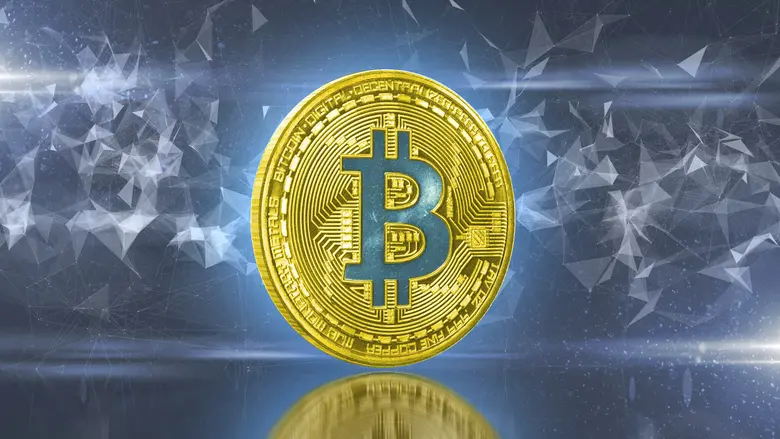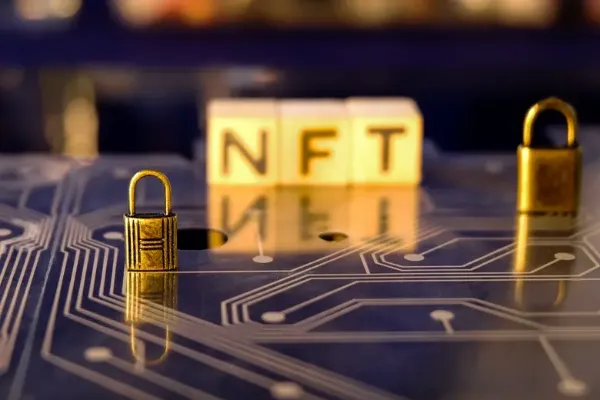Are crypto assets the Wild West?
They sprang into existence as part of the technological utopia of a parallel economy unfettered by states and central banks. They have now become diversified, sophisticated and command share prices high enough to warrant high potential value. For that reason, there are efforts within both the European Commission and national financial institutions to create a legal framework that will at last lay solid ground rules in this field.

Table of contents:
Cryptography pioneer David Chaum's lifelong dream was to create a system for digital economic transactions that would be "independent, secure and anonymous" at the same time. A parallel economy, as he defined it in 1981, not subordinated to the rules of the game of states and central banks.
Holding a PhD in computer science and business administration from UC Berkeley, Chaum is the father of two basic tools for the modern development of crypto assets: electronic money and digital signature protocols. The instruments created by Chaum in the 1990s were actually a short-lived affair. His electronic currency, ecash, and his first test of encrypted signatures, blind signature, failed to take off in any meaningful way, but they did lay the conceptual and technological foundations for a revolution that eventually emerged.
Liquid vs. hard money
Towards the turn of the millennium, digital cryptography had already achieved mainstream practice, and analysts were beginning to talk about liquid money as opposed to the solid money minted by states and their centralised financial institutions.
A group of anonymous programmers and economists (or so it is believed, as there is no official confirmation) gathered under the collective pseudonym Satoshi Nakamoto in August 2008 to launch bitcoin, a digital currency that fulfilled a longstanding dream of Chaum and the other Cypherpunk pioneers. Harnessing blockchain to guarantee security and anonymity, bitcoin ushered in a new generation of increasingly sophisticated and widely circulating crypto assets.
Harnessing blockchain to guarantee security and anonymity, bitcoin ushered in a new generation of increasingly sophisticated and widely circulating crypto assets.
There are now a tremendous array of crypto-based virtual assets. A European Commission working document reports that there are now over 17,000 different ones. Cryptocurrencies are still the most popular, but in recent years we have witnessed the rise of tokens, used as currency in the world of video games and other virtual leisure and consumption environments, and, most especially, of NFTs (non-fungible or cryptographically unique tokens), works of art or digital design that have reached staggering market values.
While it may seem like a mere anecdote (or the announcement of an imminent bursting of a tech bubble) that an NFT created by digital artist Mike Winkelmann has been sold for more than $69 million, it is also tangible proof that there are increasingly valuable digital assets whose integrity needs to be preserved and protected.
.webp)
Spain is buying virtual assets
An estimated 4.4 million Spaniards have already acquired cryptocurrencies or similar digital assets in the closing months of 2021. A surprising figure, given that we are talking about 11.2% of the population. One study by the US company Qualtrics suggests that the percentage could already exceed 50%. A certain proportion of them are simply tourists in the world of this new digital economy, who invest token amounts out of sheer curiosity, though some 70% of these investments exceed €1,000.
There is an increasingly pressing question as to whether or not we have a regulatory framework in place to properly protect these investments. Ironically, these assets were, after all, intended to be the germ of a parallel market operating under its own rules, outside of state regulators. However, these new investors are not necessarily sharing the utopias of the technological anarchism of the 1980s.
Investors want safeguards over and above the standing encryption techniques, which may be robust, yet they also present certain vulnerabilities, as revealed by the more than $682 million in crypto-assets stolen by hackers (in 72 cyberattacks on blockchain) that have been recorded globally in the first quarter of 2022. There is a lot of money at stake: the Bank of Spain considers that the main digital assets have increased 13-fold in value since the beginning of 2020. Higher value implies greater uncertainty and, consequently, a greater need for collateral of all kinds. Not only technological. Also legal.
One regulation to govern them all
The European Union has been working since 2018 on a legal framework to specifically regulate the blockchain sector. The European Parliament and Council already have a working draft regulation on crypto-asset markets that amends the only previous provision, a European Directive from 2019.
This document, dubbed the Markets in Crypto Assets Regulation (MiCA), is expected to be finalised by the end of this year and to come into force in all EU states by 2024. It is based on four premises: increasing the level of investment protection and market integrity; providing legal certainty whenever left uncovered by existing financial regulations; stimulating innovation and promoting the development of new crypto assets; and stabilising these markets by precluding excessive volatility that could lead to widespread uncertainty and speculative bubbles.
“La nueva normativa es un paso adelante, porque supone una rectificación a la política de hostilidad y desconfianza sin apenas matices que la Unión Europea mantuvo entre 2015 y 2019 con respecto a los criptoactivos”.
In more detail, the regulation seeks to lay down criteria that will help regulate the stable acquisition of cryptocurrencies with conventional money (buying bitcoins with euros) or exchanging cryptocurrencies with each other (buying Ethereum with bitcoin). Specific conditions will also be established to enable an intermediary or financial institution to manage crypto assets on behalf of third parties. It will address legal safeguards available to people whose crypto assets have been stolen. Ultimately, it will also contemplate mechanisms to prevent digital assets from being used to launder money or finance criminal activities.
The draft has already generated some controversy. Analysts including Karel Lannoo, executive director of the Centre for European Policy Studies (CEPS), believe that "the European Union has embarked on an exhaustive legislative process in a highly volatile environment whose true character has not yet been fully defined: we still cannot tell whether they are pyramid schemes, high-tech money-laundering tools or a serious, solid alternative market with operating standards that can be compared to conventional markets”.
For Antonios Broumas, Professor of Technology Law at the University of Westminster, "the new regulation is a step forward, because it represents a rectification of the EU's hostile and mistrusting policy between 2015 and 2019 with respect to crypto assets". In his opinion, the current approach is "more flexible and realistic, more open to innovation”. Some aspects of the regulation "are old, because technology tends to move ahead of regulatory frameworks that try to limit its use", but the fact that it is difficult to legislate "does not imply that it should not be done”.
.webp)
Protecting while the Commission legislates
Spain's first specific policy on crypto assets came into force in February 2022. It is a Circular of the National Securities Market Commission (CNMV) that regulates their publicity in case they are presented as an investment asset.
It is a milestone because, for the first time, a Spanish institution provides a precise legal definition of what is meant by crypto assets: “any digital representation of an asset, right or security that can be distributed or stored electronically using distributed ledger technology (DLT)”. It also makes explicit in which specific terms the purchase of these products can be promoted without engaging in misleading or deceptive advertising practices.
It is a reactive arrangement, which views crypto assets with a certain suspicion and tries to protect investors from potential risks. However, it also includes a statement of intent: the CNMV, in coordination with the Bank of Spain and the Directorate General for Insurance, considers "developments that serve to render financial services more dynamic while creating new products" as potentially positive. However, in the absence of a European framework to regulate them adequately, it is essential to impose restrictions that "adequately mitigate the risks they pose to retail investors”.
In other words, for lack of any definitive control tools, let's at least put a couple of gates on the field.



.webp)

